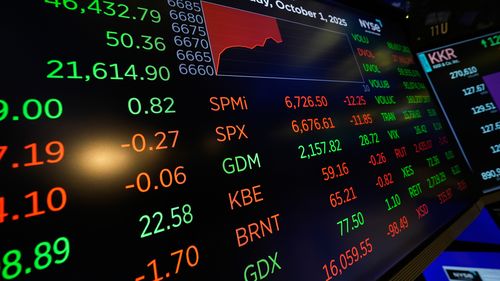Share this @internewscast.com
Excitement surrounding artificial intelligence has pushed markets to unprecedented heights this year. However, this rapid increase also brings up fears of forming a bubble.
The AI narrative has dominated the markets since 2022, when OpenAI introduced ChatGPT. Investors have been optimistic about the potential of a groundbreaking AI surge, pouring substantial funds into tech stocks, which has pushed valuations to unusually high levels.
To various analysts and economists, these are warning signals indicating the market might be experiencing a bubble. This occurs when investors inflate stock prices far beyond their actual value, creating an unsustainable rise that often leads to a sharp decline, reminiscent of the dot-com bubble burst in 2000.

This rally has evoked memories of the dot-com bubble. Nevertheless, investors highlight a crucial difference: major tech companies today are indeed profitable and demonstrate robust earnings.
“This year’s rally is propelled by solid mega-cap company earnings, unlike the 1990s tech bubble which saw soaring stocks from unprofitable early-stage companies,” noted Eric Freedman, chief investment officer at US Bank Asset Management.
Mike Mullaney, director of global markets research at Boston Partners, remarked that the market might be entering a “bubble light” zone. He noted that investor sentiment has not yet reached the exuberance levels that would indicate the market is at peak risk.
“Valuations, positioning and flows are all certainly signaling that we’re in bubble light territory, but sentiment has just not got there yet,” Mullaney said. “And so this thing could still run.”
AI’s growing influence on the S&P 500
Big Tech is an increasingly influential part of the S&P 500, which is weighted by companies’ market value. As AI-related stocks have carried the market to record highs, they have also become a more significant part of people’s 401(k) retirement plans.
While the rapid growth of tech stocks lets individual investors and people saving for retirement take part in companies’ gains, it leaves people vulnerable to a potential extended drawdown if a bubble bursts.
Just seven stocks – Alphabet (GOOG), Amazon, Apple (AAPL), Meta, Microsoft, Nvidia (NVDA) and Tesla (TSLA) – have accounted for 55 per cent of the S&P 500’s gains since the end of 2022, according to Howard Silverblatt, senior index analyst at S&P Dow Jones Indices.
The Bank of England on Wednesday said the risk of a sharp downturn in the stock market has increased.
“On a number of measures, equity market valuations appear stretched, particularly for technology companies focused on artificial intelligence,” the bank said in a quarterly report.
“This, when combined with increasing concentration within market indices, leaves equity markets particularly exposed should expectations around the impact of AI become less optimistic.”
In 1996, then-Federal Reserve Chair Alan Greenspan famously asked whether “irrational exuberance” might be taking hold in financial markets.
While Greenspan warned that the stock market could be running too hot on emotion, the dot-com bubble peak did not happen until four years later in 2000.
Federal Reserve Chair Jerome Powell on September 23 said stocks are “fairly highly valued,” drawing comparisons to his predecessor’s comments 30 years ago.
Ed Yardeni, president of Yardeni Research, said in a note: “Is the stock market back on the road to the same irrational exuberance that inflated the Tech Bubble of 1999, which was followed by the Tech Wreck of the early 2000s? Perhaps.”
“However, the S&P 500 has been driven to new highs this year by better-than-expected earnings,” Yardeni said. “We are still targeting the S&P 500 to get to 7,700 by the end of next year.”













